Top>Opinion>People Coming and Going through the Great Wall of China
 Index
Index

Yasuhiro Kawagoe [profile]
People Coming and Going through the Great Wall of China
Yasuhiro Kawagoe
Professor, Faculty of Letters, Chuo University
Area of Specialization: Early Modern Chinese History
Length of the Great Wall
Registered as a UNESCO World Cultural Heritage site and selected as one of the New 7 Wonders of the World, the Great Wall of China has traditionally been recognized as extending east to Shanhaiguan in Hebei and west to Jiayuguan in Gansu. Though the length on the map measures 2,700 km, the actual length would reach as long as 5,000 km, given undulating and overlapping. So, the figure of 10,000 in terms of an ancient Chinese distance unit called li, as the Chinese name of the Wall implies, was not fantasy. While the Japanese metrology system used chouri, or long li, the Chinese one used tanri, or short li. In the Ming period, when the Great Wall was completed, one li was equal to 559.8 m. Therefore, 10,000 li was 5,598 km.
However, on April 18th, 2009, China’s State Administration of Cultural Heritage announced that the east end of the Wall was at Hushan in Liaoning and the west end was at Jiayuguan in Gansu, and the total extension measures 8,851.8 km. In addition, they announced on June 5th, 2011, that the total extension was 21,196.18 km, which is more than twice as long as it was previously regarded to be.
The new east end, the Hushan Great Wall, is in Dandon City, which is located on the opposite shore of Yalu River from Sinuiju, North Korea. To the east from the previous east end Shanhaiguan, the Ming Dynasty built the Liaodong Wall, and the Qing Dynasty built the Liu Tiao Bian. The State Administration of Cultural Heritage included them in the Great Wall to extend the total length significantly, resulting in a lost connection between the length and its Chinese name implying the Long Fort Wall of 10,000 li.
The Great Wall as an Arena Connecting the Inside and the Outside
While the most famous construction activity for the Great Wall is the one by Qin Shi Huang, the construction itself was commenced earlier in the Spring and Autumn period of the Warring States period, and completed in the Ming period. The Wall is commonly regarded as a borderline between agricultural people and nomads, and thought of as a firm defensive wall against the northern people. Indeed, the Ming Dynasty garrisoned vast armies alongside to defend the Wall, assigned them defending roles for each segment of the Wall, and built mountain passes surrounded by firm walls, such as Yanmenguan, Juyongguan, Zijingguan, Gubeikou, and Zhangjiakou, at areas crossing the Great Wall that were important in terms of transportation. From a spatial point of view, however, those mountain passes could be regarded as an opening in the Great Wall.
Connection between the inside and the outside through those openings enabled traffic between the inside and the outside, making such openings an arena of exchange and transaction. Coexistence such as trade and confrontation such as wars emerged in multiracial and multicultural exchange, integration, and conflict.
During the period when the Ming Dynasty governed China, first Oirats and second Tatars rose and fell on the Mongolian plateau. Whereas people in Beijing were shocked by the mountain passes broken and the national capital Beijing besieged both in the Tumu Crisis in 1449 and the Gengxu Crisis in 1550, tributary delegates usually came inside the Wall to visit Beijing every year. While waiting for their chief delegate and his group to come back, other members staying inside the Wall actively traded with the Chinese, leading to prosperity around the passes. Even items prohibited by China were traded behind the scenes. The Ming Dynasty offered guards when delegate groups went back home.
In this way, the Chinese frequently interacted with Mongolians via the Great Wall. On the other hand, Ming spies called Yebushou always came and went through the Wall to execute their missions. Many people, such as those who committed a crime, were religiously suppressed as a cult, or tried to run away without paying their debts, also went through the Wall secretly to run into Mongolia. People who could fortunately take sanctuary in Mongolia lived in a Chinese village called Pan-sheng and contributed to Mongolian politics and economy.
Emperor Wandering along the Great Wall
In Chinese history, there was an emperor who left the national capital Beijing and wandered along the Great Wall for a year. He is the Ming Emperor Zhengtong, who was captured by the Oirat army during the Tumu Crisis that broke out on August 15th, 1449.
When the Mongolian forces mainly consisting of the Oirat army invaded into a border area of Ming on July 11th of that year, dispatching troops led by the emperor himself was proposed on the same day. On the 16th of that month, the troops led by Emperor Zhengtong left the capital. This large army prepared food for one month and 800,000 weapons. With this tremendous armed force, Zhengtong sought to defeat Mongolia, with which the relationship continued to deteriorate in those days. His armies were defeated in turn, however, at the Tumu Fortress on August 15th, and Zhengtong was taken captive. This incident is known as the Tumu Crisis.
Esen of Oirat, the leader of the entire Mongolian army, started negotiations to send Zhengton back to China on favorable conditions. The Ming Dynasty—having appointed Zhengtong’s half-brother as the new emperor Jingtai—did not want Zhengtong’s too-late return, resulting in a stalemate in negotiations.
Frustrated by China’s attitude, Esen and his forces brought along Zhengtong and broke Juyongguan, Zijingguan, and other passes of the Great Wall to invade Beijing. Even this, however, failed to persuade the Ming Dynasty to accept the return of Zhengtong. Since then, abandoned Zhengtong wandered around the Great Wall for one year with Esen’s army.
Finally an agreement was reached and he returned to the capital on August 15th, which was the same day as his capture by curious coincidence. With enormous delight in coming back home, Zhengtong then faced a long period of miserable confinement in the southern palace. Nevertheless, Zhengtong—who had made significant personal progress during the wandering along the Wall—came through the life of confinement and achieved a miraculous reinstatement to regain the throne after seven years.
- Yasuhiro Kawagoe
Professor, Faculty of Letters, Chuo University
Area of Specialization: Early Modern Chinese History - Born in Nichinan City, Miyazaki Prefecture in 1946. In 1976, completed the Doctoral Program of the Graduate School of Letters, Chuo University. Served as a Full-Time Instructor and Assistant Professor at the Faculty of Letters, Chuo University, before being appointed Professor in 1991 (also teaches at the graduate school). Holds a PhD in history. His many written works include Research on Chinese Classical Literature [Chugoku Tenseki Kenkyu] (Kokusho Kanko-Kai, 1978), Historical Research on the Emperor of the Kenbun Period, Ming Dynasty [Mindai Kenbun-Cho-Shi no Kenkyu] (Kyuko Shoin, 1997), Research on Foreign Country Information in the Ming Dynasty [Mindai Ikoku Joho no Kenkyu] (Kyuko Shoin, 1999), Military System and Politics of Ming Dynasty China [Mindai Chugoku no Gunsei to Seiji] (Kokusho Kanko-Kai, 2001), Scandal in Ming Dynasty China: Lan Yu Incident and Accomplices [Mindai Chugoku no Gigoku Jiken: Rangyoku no Goku to Renza no Hitobito] (Fukyo-Sha Publishing, 2002), The Ming Dynasty Great Wall Group [Mindai Chojo no Gunzo] (Kyuko Shoin, 2003) and The Chinese Emperor Kidnapped by Mongolia: The Strange Fate of Zhengtong Emperor in the Ming Dynasty [Mongoru ni Rachi sareta Chugoku Kotei: Min Eiso no Suuki naru Unmei] (Kenbun-Shuppan, 2003).
-
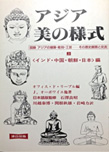

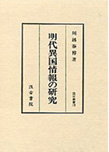

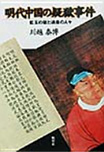



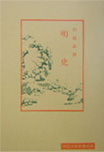
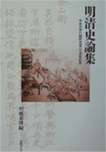
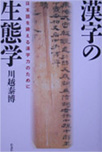
Jeannine Auboyer, La Grammaire Des Formes et Des Styles: Asie [Ajiia—Bi no Yoshiki (Jo):Indo, Chugoku, Chosen, Nihon hen], Office Du Livre, 1982 (translated by Yoshiaki Ishizawa, Akio Sekine, and Yasuhiro Kawagoe, Rengo Shuppan, 1989)
Yasuhiro Kawagoe, Historical Research on the Emperor of the Kenbun Period, Ming Dynasty [Mindai Kenbun-Cho-Shi no Kenkyu] (Kyuko Sosho 12, Kyuko Shoin, 1997)
Yasuhiro Kawagoe, Research on Foreign Country Information in the Ming Dynasty [Mindai Ikoku Joho no Kenkyu] (Kyuko Shoin, 1999)
Yasuhiro Kawagoe, Military System and Politics of Ming Dynasty China [Mindai Chugoku no Gunsei to Seiji] (Kokusho Kanko-Kai, 2001)
Yasuhiro Kawagoe, Scandal in Ming Dynasty China: Lan Yu Incident and Accomplices [Mindai Chugoku no Gigoku Jiken: Rangyoku no Goku to Renza no Hitobito] (Fukyo-Sha Publishing, 2002)
Yasuhiro Kawagoe, Historical Essays on Four-Character Idioms [Yoji-Jukugo Rekishi Manpitsu] (Asia Books, Daishukan Shoten, 2002)
Yasuhiro Kawagoe, The Ming Dynasty Great Wall Group [Mindai Chojo no Gunzo] (Kyuko Shoin, 2003)
Yasuhiro Kawagoe, The Chinese Emperor Kidnapped by Mongolia: The Strange Fate of Zhengtong Emperor in the Ming Dynasty [Mongoru ni Rachi sareta Chugoku Kotei: Min Eiso no Suki naru Unmei] (Kenbun-Shuppan, 2003)
Yasuhiro Kawagoe, History of the Ming Dynasty [Min-Shi] (The Sequel of Chinese Classics Shinsho, Meitoku Shuppan, 2004)
Yasuhiro Kawagoe, ed., Collection of Works on History of the Ming and Qing Dynasties: The 20th Anniversary of the Kawagoe Lab, Chuo University [Min Shin Shi Ronshu: Chuo Daigaku Kawagoe Kenkyushitsu 20-shunen Kinen] (Kokusho Kanko-Kai, 2004)
Yasuhiro Kawagoe, Ecology of Chinese Letters: For the Capability of Using Chinese Letters for Training the Japanese Language [Kanji no Seitaigaku: Nihongo wo Kitaeru Kanji-Ryoku no Tameni] (Sairyusha, 2005)
- Research Activities as a Member of Research Fellowship for Young Scientists (DC1), Japan Society for the Promotion of Science (JSPS) Shuma Tsurumi
- Important Factors for Innovation in Payment Services Nobuhiko Sugiura
- Beyond the Concepts of Fellow Citizens and Foreigners— To Achieve SDGs Goal 10 “Reduce Inequality Within and Among Countries” Rika Lee
- Diary of Struggles in Cambodia Fumie Fukuoka
- How Can We Measure Learning Ability?
—Analysis of a Competency Self-Assessment Questionnaire— Yu Saito / Yoko Neha - The Making of the Movie Kirakira Megane








